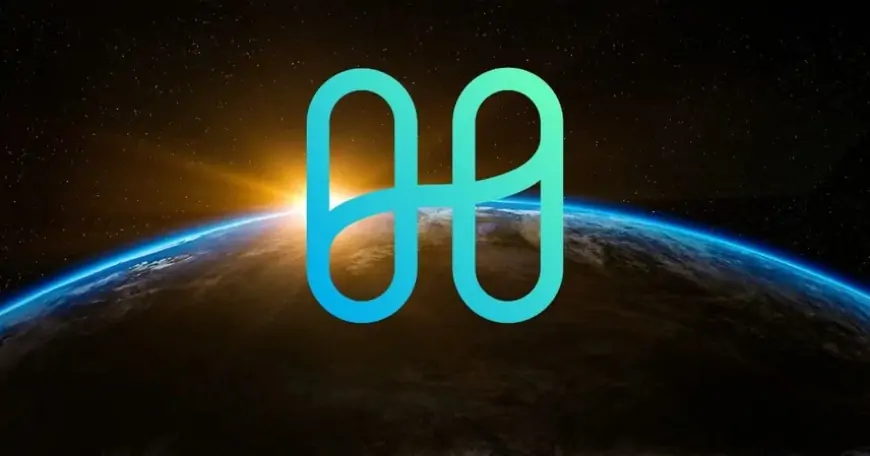What is Harmony (ONE) and how does it work? Everything you need to know
Harmony (ONE) is a blockchain platform known for its scalability and low fees, offering decentralized applications (dApps) and token issuance.

What is Harmony (ONE)?
Harmony (ONE) is a decentralized blockchain platform designed for creating, hosting, managing, and using decentralized applications (DApps) with exceptional scalability and interoperability. It addresses current limitations of Ethereum, offering solutions to enhance the performance of decentralized applications.
The project aims to establish a self-sustaining ecosystem where users can create markets for both fungible and non-fungible tokens using available tools, while benefiting from scalability and interoperability through sharding. With upcoming updates planned for late 2021, Harmony intends to play a significant role in decentralized finance.
Harmony boasts block generation times of under a second, enabling near-instant transactions and higher throughput than networks like Ethereum.
ONE is the native cryptocurrency of Harmony, serving multiple purposes within the network. It can be used to pay for services and operations on the platform, including storage. ONE holders also have the ability to participate in network governance, as holding ONE grants them voting rights.
How does Harmony work?
Harmony utilizes random state sharding to enhance scalability and transaction speed. This approach involves dividing the network's database into smaller partitions called shards, reducing latency and enabling fast, near-instant transactions. Sharding helps prevent network congestion.
The sharding process relies on an adaptive Proof of Stake consensus mechanism that incorporates distributed randomness generation. This setup ensures security, scalability, and straightforward verification.
The Harmony network uses a modified version of the Byzantine Fault Tolerance protocol called Fast BFT (FBFT). This protocol allows for speedy and efficient processing of transactions through parallel processing. Additionally, Harmony lowers communication costs by using aggregate signatures, enabling over 250 validators to achieve consensus in under two seconds.
Who founded Harmony and what is its history?
Harmony was founded and developed by a team with extensive experience in cryptography and computer science, aiming to bring scalability and interoperability to Dapp developers. Stephen Tse, the founder and CEO, along with co-founder Nick White, have been instrumental in shaping Harmony's direction. The company was established in 2017, initially with a team of 12 members, including Tse, several of whom had previously worked at tech giants like Microsoft, Google, Amazon, and Apple.
Tse himself has a background in engineering, having worked at Google, Microsoft, and Apple. Harmony's future plans include the introduction of cross-sharding and cross-chain infrastructure by the end of 2021 to enhance its capabilities further.
What makes Harmony unique?
Harmony stands out in the cryptocurrency and DeFi sectors by offering rapid validation times and near-instant transaction finality through its innovative approach. By implementing sharding, Harmony drastically reduces transaction validation times, enabling blocks to be created within seconds.
Moreover, Harmony promotes Dapp development through its Harmony Grants program, aimed at attracting more developers to the network and fostering innovation in Dapp creation. In addition to leveraging FBFT and game theory, Harmony employs a Verifiable Random Function for enhanced security and sharding capabilities, setting it apart from other projects in the space.
What gives Harmony value?
The value of Harmony is tied to its technology, utility, and technical capabilities to support network operations and use cases. These factors determine its intrinsic value. Conversely, the value of ONE, Harmony's native token, is largely influenced by volatility and various specific factors.
Harmony's use of sharding addresses congestion issues and enhances scalability, allowing for near-instant transaction processing. However, the actual value of the project may not always align with its market price, partly due to the volatile nature of the cryptocurrency market.
How many Harmony (ONE) coins are currently in circulation?
There are currently 12,305,426,115 ONE coins in circulation out of a total of 13,156,044,839.793139 ONE. Unlike some cryptocurrencies, there is no capped maximum supply of ONE. Harmony currently uses inflation to reward stakers, with a total annual reward rate set at 441 million ONE. However, transaction fees offset the issuance of new tokens, so as network adoption grows, inflation tends towards zero.
The market capitalization of Harmony, which is the current price of ONE multiplied by the number of coins in circulation, ranks ONE among its cryptocurrency peers. This market cap not only defines Harmony's dominance and market share but also reflects its value in the market.












































